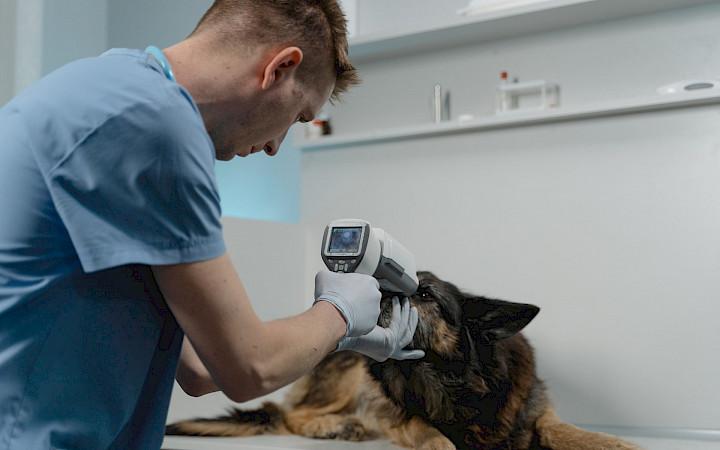
For me, having a dog lose vision is tougher than losing hearing. And losing both together is a real challenge for both your dog and you.
Remember that your dog’s vision probably isn’t as good as yours even when normal. Dogs rely so much on their sense of smell, whereas people rely primarily on their vision.
How do you know if your dog is losing vision? You may notice her tripping when she steps off a curb, or misjudging distance when getting in the car or jumping on the bed. You may also notice that she turns her head when called, but is looking around or right past you and can’t see you clearly. These are just some of the signs of vision loss.
Many dogs get something called lenticular sclerosis, which results in seeing through a sort of cracked windshield. Others develop cataracts which you can usually easily see because the center of their eye becomes cloudy. Dogs can also get glaucoma which not only affects their vision, but it also painful. Any vision loss really needs to be checked out by your vet to determine the likely cause. If necessary, you vet can send you to a veterinary opthlamologist for further testing or treatment. Glaucoma always needs to be treated, and cataract surgery is an option for many dogs.
If your dog’s vision is poor, do what you can to help.
- Don’t move furniture around if you can avoid it. Your dog will likely have an uncanny ability to get around a house that she has lived in for years, even if totally blind.
- If your dog can still hear, give audible clues to “step down” on a curb or “wait” to open a door. If you use words consistently, your dog will come to understand what those cues mean.
- Alert your dog to an approaching person or dog. People sometimes pet a dog without asking, which is never okay, but can be terrifying to a blind dog who is suddenly being touched by a stranger she didn’t see coming. And being scared can lead to fear biting.
- Know that often times, a dog’s vision may be better at dusk when the pupil dilates to let in more light, so you might want to walk her at that time of day so that she can be more aware and see more.
- Beware of steps. Some visually impaired dogs can still navigate them, but it can be very dangerous for an older blind dog to use steps. You can put padding or tape strips on steps so that they can feel them, or even scents on the last step so that they know they have reached the bottom or top.
- NEVER LEAVE A BLIND DOG ALONE ANYWHERE NEAR A SWIMMING POOL OR BODY OF WATER.
- Introduce your dog to scent work or food puzzles that they can play without having to see. A dog can do so much with her nose!